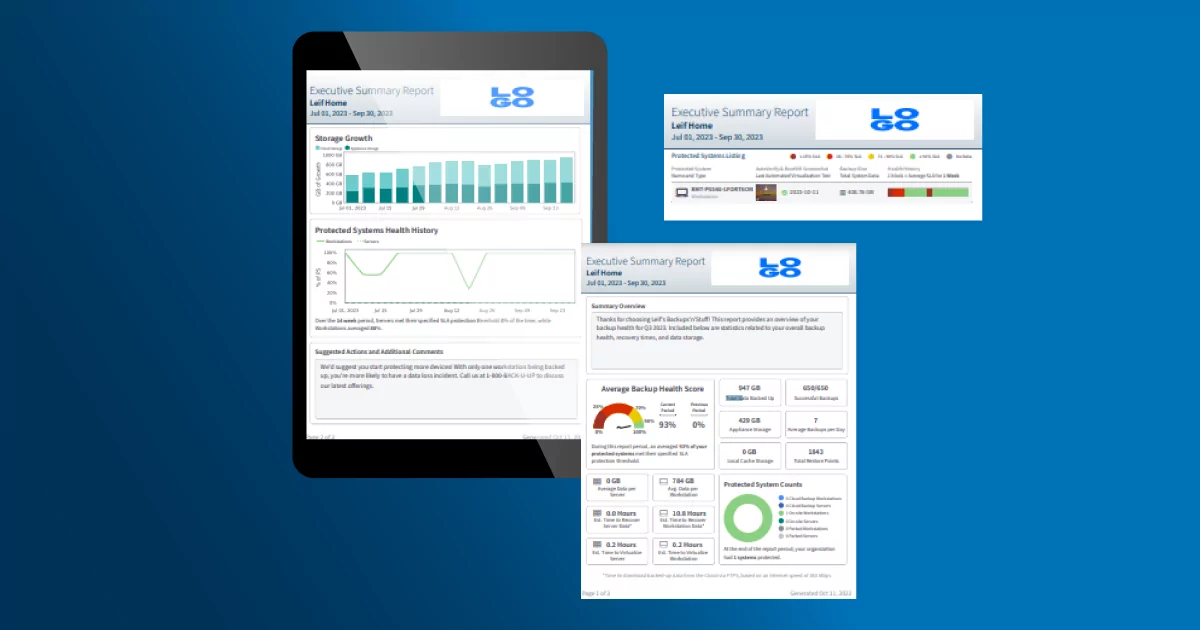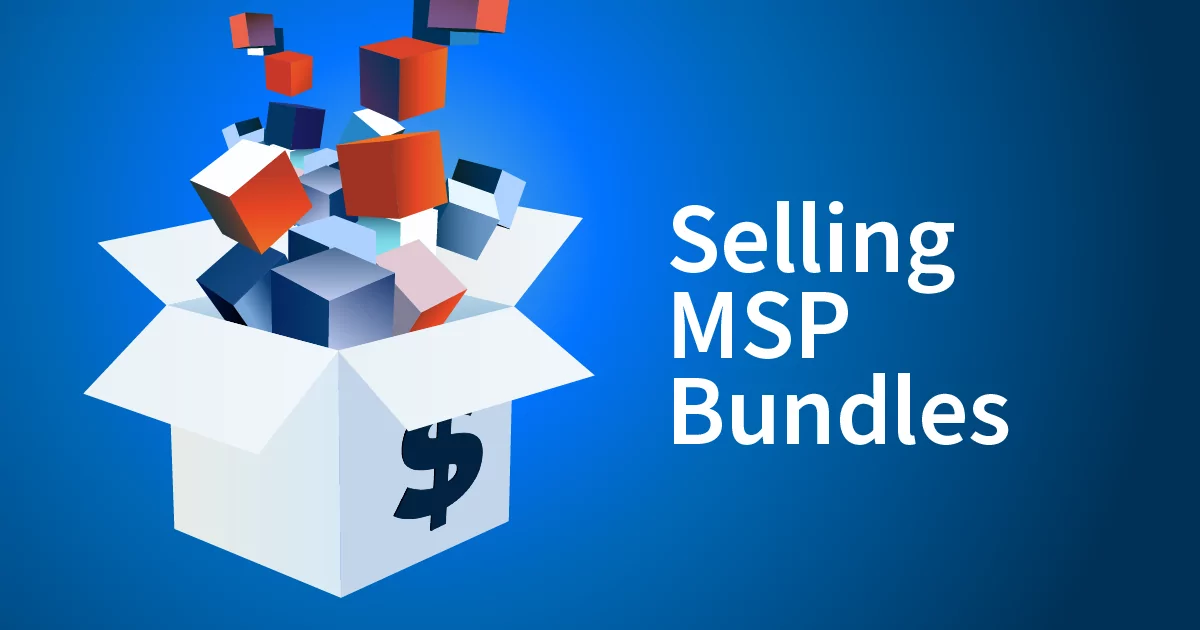
Selling MSP Value Over Services
Table of Contents
How to Keep Clients “Sticky”
In managed services, differentiation is key to long-term client retention and profitability. Too often, MSPs focus on selling services rather than emphasizing the value behind them. This is especially true with business continuity and disaster recovery (BCDR), where preventing downtime and data loss is far more critical than just offering a backup solution. The MSPs who successfully embed BCDR value into their service offerings position themselves as indispensable partners rather than replaceable vendors.
Keep reading to understand the differences between value-based sales and marketing and service-first interactions. Using The QBR Handbook for MSPs: The Four Rs of QBR Success, MSPs can align data protection solutions with business stability and peace of mind to foster long and mutually beneficial partnerships with clients. Keep reading or download the handbook below to integrate relationship-building, retention, revenue growth, and reporting into your business development strategies to keep clients “sticking” to your MSP.
>> Direct links with no form: The QBR Handbook for MSPs
What is a “Sticky” Client?
In sales and marketing, keeping clients “sticky” means fostering long-term loyalty and reducing churn by deeply embedding your services into their operations. Sticky clients see your MSP value as an integral part of their business, making switching providers without significant disruption difficult. The goal is to build strong relationships, provide continuous value, and proactively address client needs before they even realize them. Strategies for keeping clients sticky include:
- Consistent communication: Regular check-ins and quarterly business reviews (QBRs) provide dedicated time for MSPs to interact with clients, discuss new concerns or threat vectors, and provide protection for vulnerabilities.
- Proactive problem-solving: Addressing potential issues before they impact operations is imperative to avoiding downtime and costly business interruptions that damage client trust and relationships.
- Tailored solutions: Customizing services to align with a client’s specific compliance, industry, infrastructure, and budget needs enhances retention, attracts new clients, and allows for the creation of niche services by specializing in a targeted vertical.
- Strategic integration: Making your services an essential part of a client’s workflow ensures long-term engagement, as clients become reliant on and trust the data protection solutions that keep their businesses running.
The Shift from Selling BCDR Services to Selling MSP Value
Selling BCDR as just another service puts MSPs in a race to the bottom, competing on price rather than strategic impact. Instead, selling MSP value means demonstrating how your partnership strengthens business continuity, operational resilience, and compliance readiness. Clients care less about the technical details and more about outcomes – such as avoiding costly downtime, protecting against cyber threats, and ensuring data recoverability.
Clients who see you as a strategic partner rather than just a service provider are more likely to stay with you long-term due to the benefits of your services. Enhanced retention builds trust and cements your role in the client’s business successes. Additionally, focusing on risk mitigation, comprehensive BCDR, and business outcomes, rather than only technology solutions, creates a compelling differentiation from competitors who only offer backup services. The unique positioning of your client interactions, content, sales, and marketing not only helps your MSP stand out in the market but also reinforces your existing relationships.
Selling BCDR value also enables higher revenue opportunities for MSPs. Emphasizing the business continuity and risk reduction aspects of proactive BCDR solutions justifies premium pricing. Clients must understand that they are investing in business resilience, not just another IT expense. Moreover, strong BCDR strategies align with compliance requirements in many industries, further reinforcing your MSP value proposition. You become an indispensable advisor in their business strategy by helping clients navigate regulatory complexities and ensure data protection.
Connecting BCDR Technology with Business Outcomes
Clients often don’t recognize the full risks of downtime and data loss until they experience a disaster – and then, it’s too late. MSPs must proactively and regularly communicate the real-world impact of BCDR solutions and technology on business availability to demonstrate the MSP value. Instead of selling backup and disaster recovery (BDR) as a feature, illustrate how it serves as a business enabler.
What happens without effective BCDR?
- Financial losses: Downtime can cost businesses thousands – or even millions – per hour in lost productivity and revenue.
- Reputational damage: Customers lose trust in MSPs that cannot maintain operations during an incident, which could lead to contract terminations.
- Regulatory penalties: Compliance failures due to inadequate data protection can result in fines and legal action.
- Operational disruptions: Even minor outages can severely impact business operations without a tested recovery plan.
How can MSPs drive BCDR and MSP value?
- Educate clients on business impact: Show clients how the features of your BCDR solution translate to business benefits, such as minimizing downtime, protecting revenue, and ensuring seamless operations for a positive customer experience.
- Align BCDR with business goals: Frame BCDR strategies and solutions as mandatory business continuity investments, not an optional IT expense that can be forgone or downgraded.
- Deliver proof of value in QBRs: Use quarterly or regular business reviews to highlight recovery metrics, real-world threats mitigated, and continuous improvement opportunities to reinforce and extend current services as needed.
- Showcase real-world case studies: Share examples of businesses similar to the client you’re meeting concerning size, vertical, budget, and goals to tie tangible results and outcomes to tried-and-true BCDR strategies.
- Regularly test and validate recovery: Successful recovery testing and virtualization are not only a best practice for reassuring clients that their business is protected, but they are also a requirement of many must-haves, including cyber insurance policies, compliance regulations, and industry standards.
Maximizing BCDR Value During Business Reviews
Quarterly or regular business reviews present the best opportunity for MSPs to comprehensively demonstrate the value of their BCDR services and reinforce their role as trusted advisors. These reviews allow MSPs to showcase the impact of their services, discuss risk mitigation strategies, and align BCDR with the client’s business objectives. However, structuring these meetings for maximum impact requires a planned approach.
The QBR Handbook for MSPs: The Four Rs of QBR Success provides a structured framework to help MSPs make the most of their business reviews. This resource is designed to help MSPs…
- Build stronger relationships: Move beyond transactional topics like equipment purchases or staff training, focusing instead on the client’s overall, long-term business goals and how your IT services have and will continue to contribute to their achievements.
- Retain clients more effectively: Give clients a reason to stick to you by aligning your roadmap with their goals, proactively planning for IT refreshes, and delivering information in a tailored, easy-to-digest manner that directly ties to their business outcomes.
- Drive revenue growth: Take the win-win-win approach to built-in upselling and cross-selling with bundled services that make it easy for clients to invest in the data protections required for uninterrupted business continuity.
- Leverage reporting for transparency: Transform confusing reports into engaging client stories using co-branded materials that summarize services and provide proof of best practices for compliance and insurance demands.
To keep clients sticky and show your MSP value, you must shift from selling BCDR as a service to positioning it as part of their QBR best practices as an essential business enabler. By framing BCDR within the context of business continuity, risk management, and compliance, you continually reinforce your long-term value as a strategic business partner.
Want to increase the value of your client relationships? Follow the practical, actionable, and value-based strategies outlined in The QBR Handbook and maximize strategic conversations to improve client success, retention, and profitability.
>> Download the QBR Handbook for MSPs with no form to fill out or strings attached.
Author
Related posts
How well could you sleep with reliable cloud-based backups and recovery?
Take a deep dive into Axcient’s proprietary, automated security features to see how we’re ensuring uninterrupted business continuity — no matter what:




